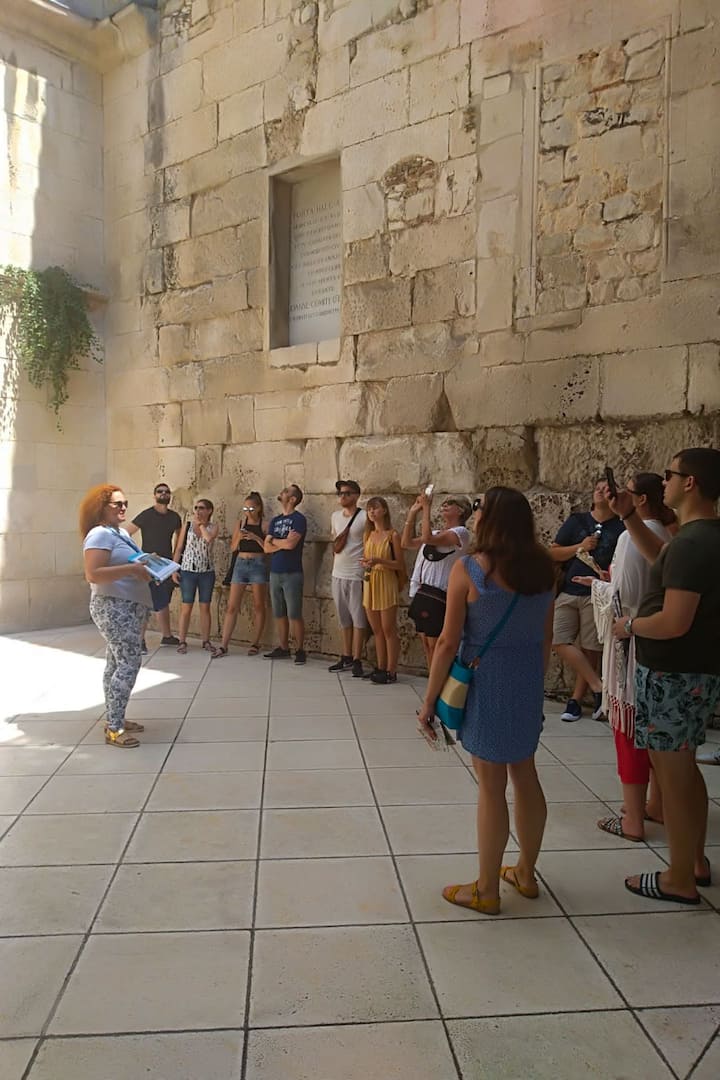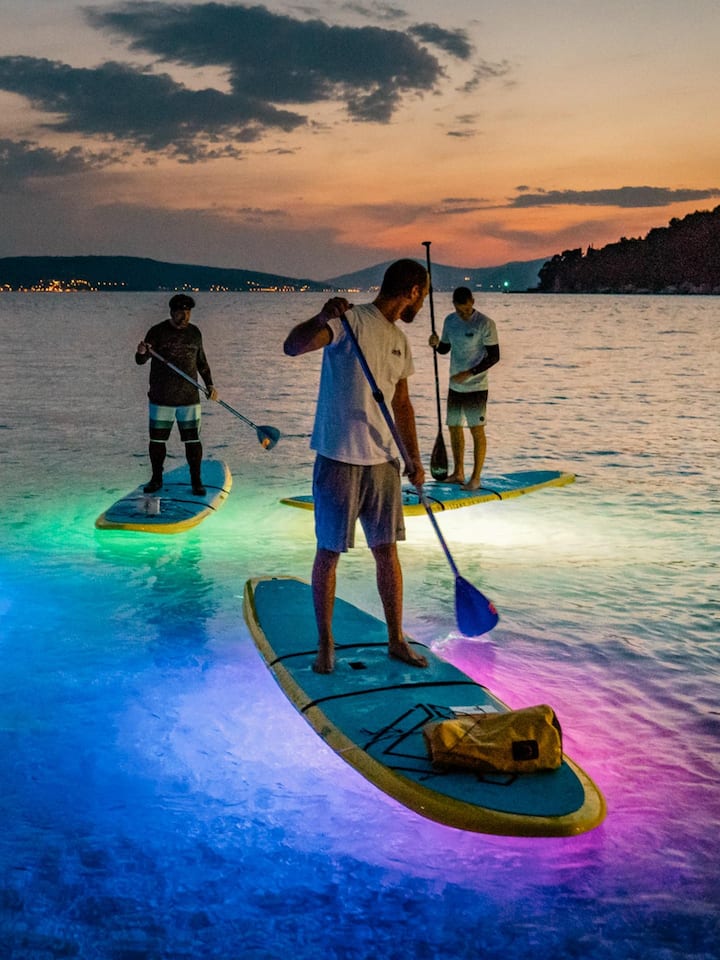Sito storico
Split
Consigliato da 875 persone del luogo,
Consigli della gente del posto
Split is the largest city in Dalmatia, and the second largest city in Croatia in terms of population, and is the economic and cultural center of Dalmatia. It is located in the central part of the eastern Adriatic coast, bordered by the Kastela Bay from the west and north, and the Brač Channel from the south and spatially covers most of the Split peninsula which connects with the mainland with its north and east sides. The city center, located on the eastern side of the Marjan Peninsula, which is now a protected park-forest, is the ancient Diocletian's Palace from the 4th century (under UNESCO protection of October 26, 1979 [1]), which is a unique example in the world. Leaning against the ancient palace, along the south coast to the west, leans the medieval core. Around these two cores, which today form a whole, towards the west, east and north, many newer and even modern Split settlements have sprung up over the years. On the northern coast of the Split peninsula is located the City Stadium Poljud, which since its construction is home to the famous football club HNK Hajduk.
Split is the largest city in Dalmatia, and the second largest city in Croatia in terms of population, and is the economic and cultural center of Dalmatia. It is located in the central part of the eastern Adriatic coast, bordered by the Kastela Bay from the west and north, and the Brač Channel from t…
Diocletian Palace and the entire historical core of Split have been on the World Heritage UNESCO list ever since 1979. You can easily spend a couple of days exploring the city.
The story of Split is already 17 centuries old, dating to the time the Roman Emperor Diocletian decided to build his Palace right on the peninsula near the great Roman city Salona, where he wanted to spend the last years of his life. During these 1700 years the Palace slowly turned into a city, which to this day lures with its rich tradition, glorious history and beauty of its natural and cultural heritage. Diocletian Palace and the entire historical core of Split have been on the World Heritage UNESCO list ever since 1979, and not only for the extraordinary preservation of the Palace, but also because the Palace and its city (or the city and its Palace, if you like) continue to live a full life. All historical layers from the old Rome, middle ages till today are still visible and alive in this structure. Split is much more than glorious architectural scenery. Split is also a venue for excellent gourmet and wine experiences, numerous cultural happenings like film and theatre festivals, exhibitions, excellent museums and concerts, a city which offers eclectic modes of entertainment starting with numerous clubs and bars, through street festivals to events such as Ultra Europe Festival visited each year by up to 100 thousand young people from around one hundred countries of the world. When you tire of the city bustle, there’s Marjan, hill symbol over the city, with its forest, jogging trails, mountain climbing and biking, recreational terrains, but also the ancient churches where the late citizens of Split sought spiritual peace. Also very unusual to find in a city the size of Split are the numerous beaches with extraordinarily clean sea, from the well known Bačvice to the stone secluded oases’ all around Marjan.
The story of Split is already 17 centuries old, dating to the time the Roman Emperor Diocletian decided to build his Palace right on the peninsula near the great Roman city Salona, where he wanted to spend the last years of his life. During these 1700 years the Palace slowly turned into a city, whic…
With a bit more than 90' drive from Pridraga, split offers many attractions. You can walk around a Roman Palace, hit the beach, party all night or go island hopping - all in one city.
No longer just a launchpad to Dalmatia’s islands, Split has successfully shaken off its one-time image as an industrial backwater, reinventing itself as a city where antiquity and urban life fully intersect. These days, visitors revel in its laid-back city vibe, and the intricate knot of cobbled streets which make up the central Diocletian’s Palace throbs with activity in summer. Split, or Croatia’s second city, is the second-largest after the capital Zagreb. Its historic centre is situated inside a Roman palace, but isn’t just a pretty seaside attraction: Diocletian’s Palace is a fully-functional high street, home to Split’s leading commercial outlets and the thumping heart of the city’s restaurant and nightlife scenes. Designed to house the noble Emperor Diocletian, and the shackled serfs that served him, the Palace’s shell is spectacularly well-preserved for a Roman ruin, abandoned for several centuries after its construction and the fall of the empire. In the 7th century AD, local refugees fleeing a Croat invasion carved out a life in the trestles and alcoves of the abandoned palace, and it’s been in use ever since 5 reasons to visit Split, Croatia: - You can dawdle around Roman Palace - You can experience Dalmatian coffee culture. - You can hit the beach. - You can party all night - You can go island hopping
No longer just a launchpad to Dalmatia’s islands, Split has successfully shaken off its one-time image as an industrial backwater, reinventing itself as a city where antiquity and urban life fully intersect. These days, visitors revel in its laid-back city vibe, and the intricate knot of cobbled st…
Split attraverso le esperienze Airbnb
Scopri questa meta emblematica attraverso le esperienze Airbnb, attività in piccoli gruppi offerte da persone del luogo
Posizione
Split, Split-Dalmatia County







